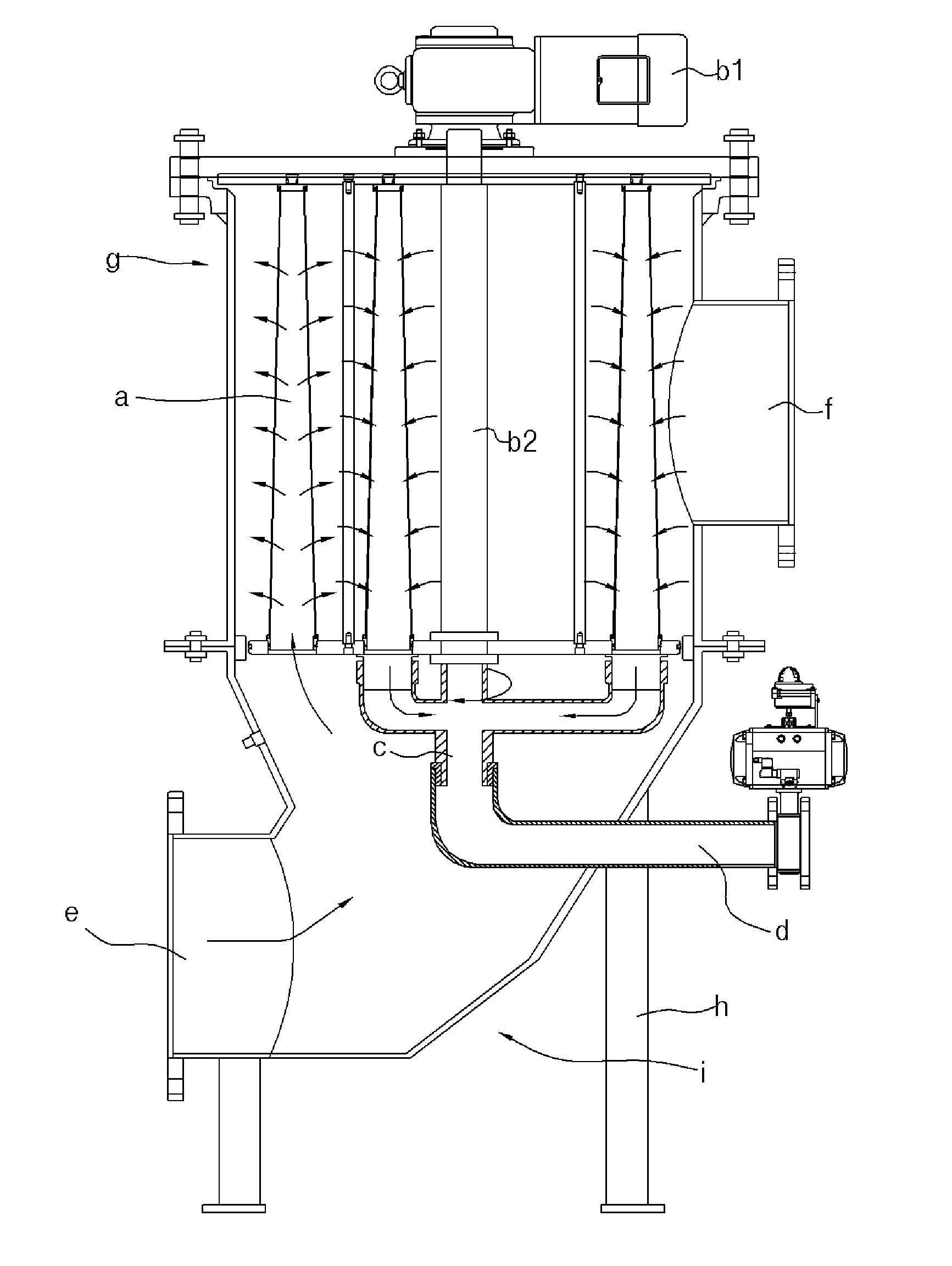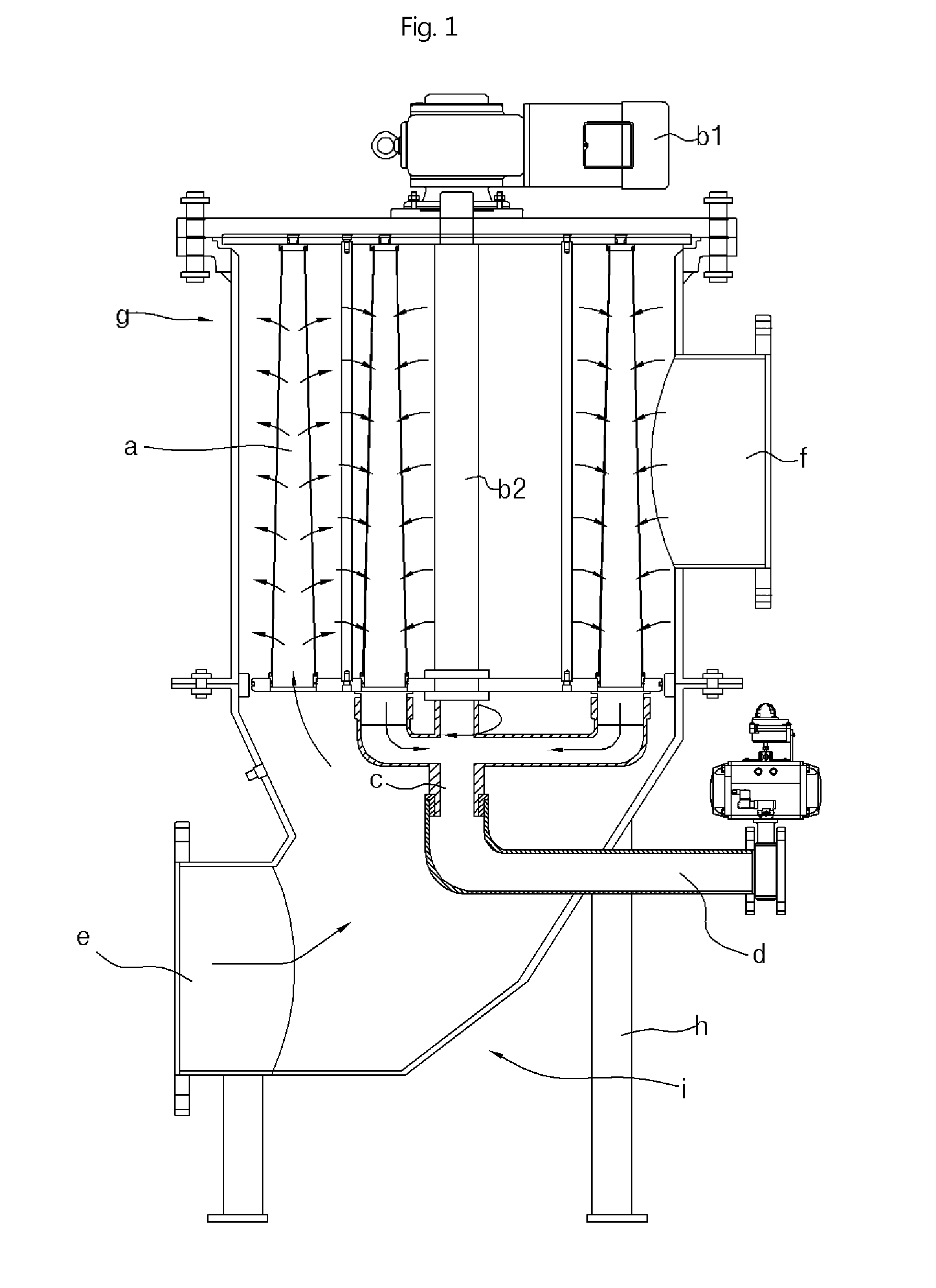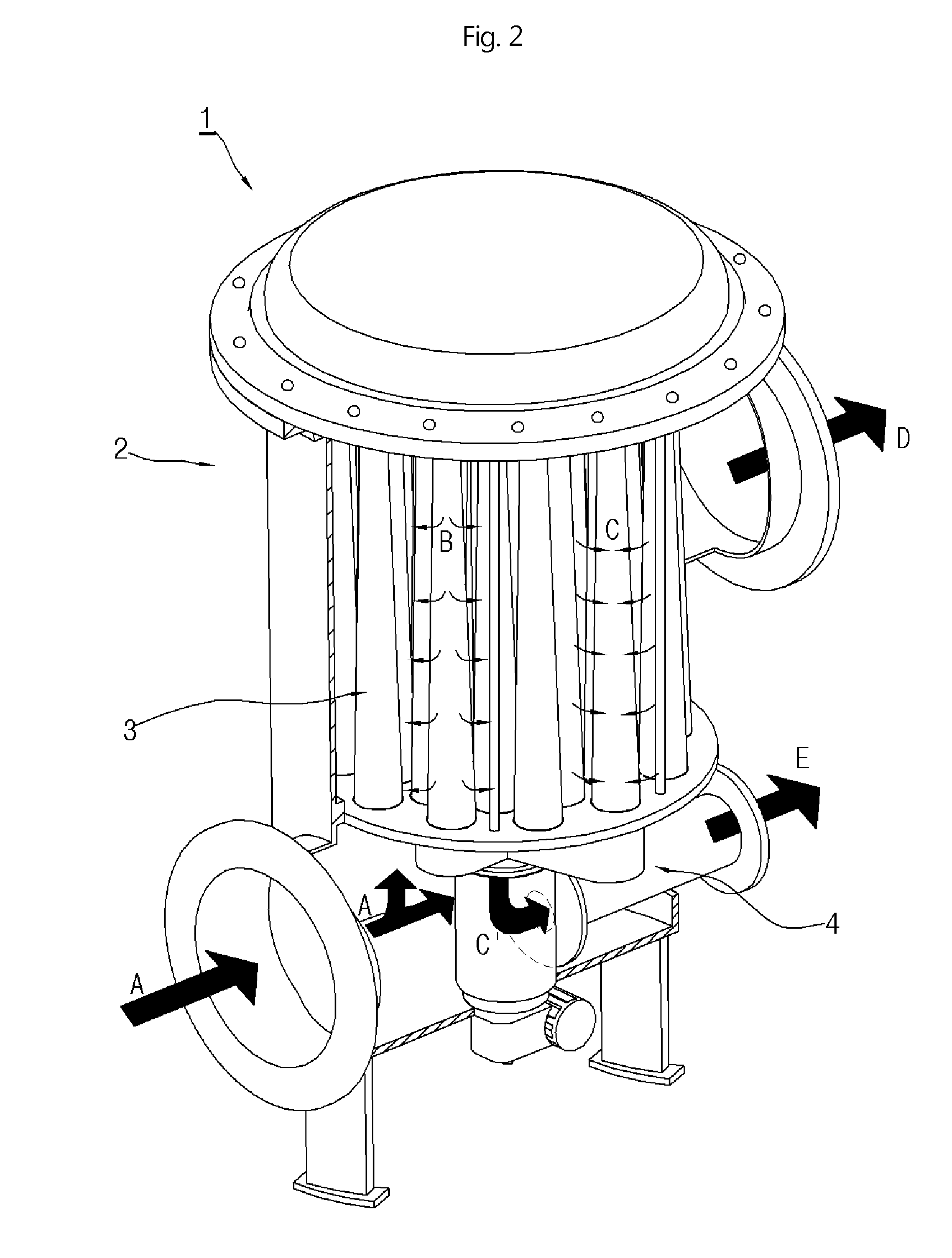High-efficiency candle-type device for filtering ballast water having high-density filter structure
a filter structure and high-efficiency technology, applied in sedimentation settling tanks, vessel construction, separation processes, etc., can solve the problems of affecting the quality of ballast water, difficult to continuously perform a similar level of filtering, and damage to the marine ecosystem of another country, so as to reduce the sealing cost, improve the filtering efficiency, and prevent the original ballast water from being mixed
- Summary
- Abstract
- Description
- Claims
- Application Information
AI Technical Summary
Benefits of technology
Problems solved by technology
Method used
Image
Examples
first embodiment
[0118]FIG. 2 is a perspective view showing a candle-type ballast-water filtering device 1 according to the present invention, and FIG. 3 is a vertical sectional view of FIG. 2.
[0119]Referring to FIGS. 2 and 3, the candle-type ballast-water filtering device 1 according to the first embodiment of the present invention may include a housing 2 having an inlet portion 21 and an outlet portion 24 that allows ballast water to flows into and out of a vessel. A filter portion 3 is located in the housing 2 to filter original ballast water introduced through the inlet portion 21. An automatic washing portion 4 functions to wash foreign substances off of the filter portion 3.
[0120]The housing 2 is configured to define a body of the candle-type ballast-water filtering device 1 according to the present invention, and may preferably have a cylindrical shape to accommodate the filter portion 3 for filtering the ballast water while allowing ballast water to flow along an inner wall without being sub...
second embodiment
[0136]Referring to FIGS. 5 to 7, in a candle-type ballast-water filtering device 1 according to the present invention, the suction portion 41 includes the flushing arm 411 that is formed on an end thereof and rotates on the lower cover 232 to communicate with the filter element 31 and thereby suck backwash water, and a flushing body 412 that moves backwash water sucked through the flushing arm 411 and transmits a rotating force from the driving shaft 421 to the suction portion 41.
[0137]The flushing arm 411 is provided on an end of the suction portion 41 and is configured to communicate with the filter element 31 while rotating on the lower cover 232, thus sucking backwash water. Preferably, as the flushing arm rotates around the driving shaft 421 by the driving portion 42 and sequentially communicates with the filter element 31 passing through the lower cover 232, it sucks backwash water containing foreign substances attached to the inner wall of the filter element 31 by the differe...
third embodiment
[0142]Referring to FIG. 9, in a candle-type ballast-water filtering device 1 according to the present invention, the flushing body 412 includes a driving-shaft locking means 413 that locks an end 423 of the driving shaft.
[0143]The driving-shaft locking means 413 refers to all configurations for locking the end 423 of the driving shaft. Preferably, as shown in FIGS. 9 to 11, the locking means includes a bar plate 414 crossing a central line of the flushing body 412, and a locking pin 415 locking the bar plate 414 to the end 423 of the driving shaft. As shown in FIGS. 10 and 11, the bar plate 414 is a rectangular parallel-piped thin plate that horizontally crosses a conduit of the flushing body 412, a coupling hole 427 being formed in the plate so that the locking pin 415 is inserted into the coupling hole to be coupled to the end 423 of the driving shaft. A sufficient sectional area 417 is provided in portions other than the bar plate 414 to permit the movement of the backwash water....
PUM
| Property | Measurement | Unit |
|---|---|---|
| density | aaaaa | aaaaa |
| diameters | aaaaa | aaaaa |
| restoring force | aaaaa | aaaaa |
Abstract
Description
Claims
Application Information
 Login to View More
Login to View More - R&D
- Intellectual Property
- Life Sciences
- Materials
- Tech Scout
- Unparalleled Data Quality
- Higher Quality Content
- 60% Fewer Hallucinations
Browse by: Latest US Patents, China's latest patents, Technical Efficacy Thesaurus, Application Domain, Technology Topic, Popular Technical Reports.
© 2025 PatSnap. All rights reserved.Legal|Privacy policy|Modern Slavery Act Transparency Statement|Sitemap|About US| Contact US: help@patsnap.com



